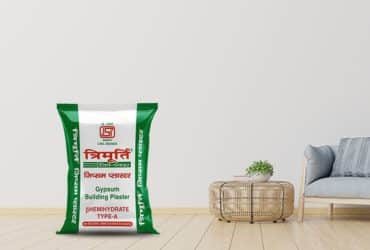The Magnificent Benefits of Plaster of Paris
Plaster of Paris is composed of gypsum powder. The plaster of Paris powder was found after the collapse of cave homes in France, showing partly caved-in ceilings caused by water damage. These ceilings were discovered to be coated with hardened plaster.
People then noted that they healed quicker when they were harmed or had wounds when wrapped in plaster/gypsum bandages. This is because this substance rapidly dries physiological fluids and completely closes any open damage.
Numerous advantages of Plaster of Paris include the following:
- When the application comes into touch with the skin, a powerful chemical reaction occurs. Therefore, while preparing and applying the plaster of Paris, it is recommended to use thin rubber gloves or surgical gloves.
- Plaster of Paris, according to French experts, may be used as a treatment for wounds and injuries.
- It takes around 20 minutes for plaster of Paris to harden completely. How it works is as follows:
- As the water in the plaster evaporates due to the heat generated by your skin, a solid mass is left behind that works as a natural tissue adhesive.
- This implies that if you have an open wound, it will heal more quickly if you wrap it in this cloth since it promptly seals up any body fluids.
- Another advantage is its potential to whiten teeth when used every night before bed for one week, followed by brushing with ordinary toothpaste.
- It is recommended that you only do this once a week (and avoid swallowing it because of its toxicity, see point 2).
- Plaster of Paris is also referred to as plaster bandages. This is because it is flexible and may be applied straight to the skin without the need for gauze or other filler materials. Within minutes, it begins to harden and entirely dries within an hour (depending on humidity levels and thickness applied).
- When plaster of Paris is combined with water, it forms a paste, making it very sticky when applied over bandages to close wounds. This essentially prevents them from being opened if a person wearing bandages falls over.
- Additionally, the rock-solid texture makes it great for arts and crafts projects.
- Plaster of Paris is available in a variety of forms, including wet (the most common), dry (which should be mixed with water before use), spray, powder for dissolving manually with water, brush-on (for wounds), coloured plaster (useful for arts and crafts), therapeutic agents added to plaster bandages or regular Plaster of Paris bandages. Additional benefits include cooling the skin, reducing pain, and slowing blood loss (accelerates clotting).
- Use dried-out Plaster of Paris as a calcium supplement. Calcium is necessary for animals and humans to have healthy and developing bones (and Plaster of Paris contains high amounts of calcium, to begin with).
- Plaster powder may also be combined with other materials such as sand or cement and then spray-painted or dyed before setting. This is the material used in films to create the appearance of rocks, bricks, and other objects.
- Combine plaster powder with oil-based paint to create a fake stone finish/paint that may be put on wood, metal, or even cardboard to create a real copy of marble or granite.
Thus, these were some of the Pop supplied by the best plaster of Paris brand in India,



